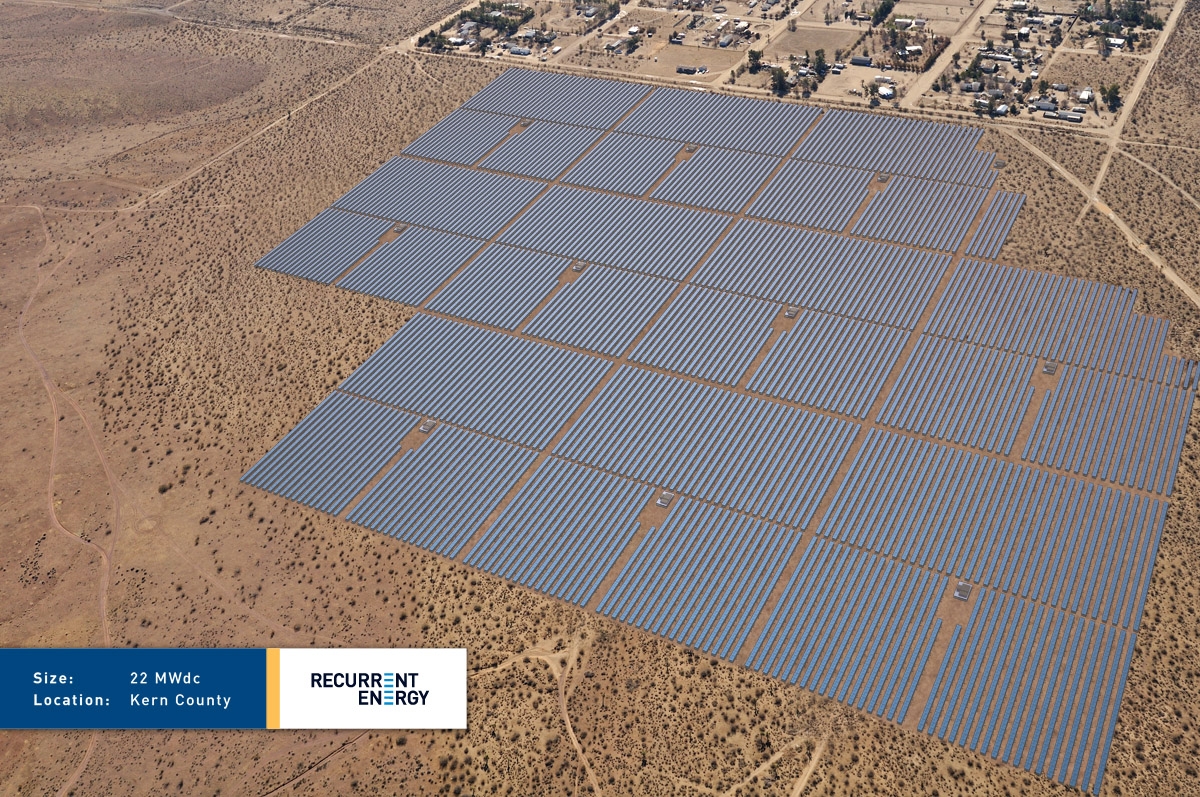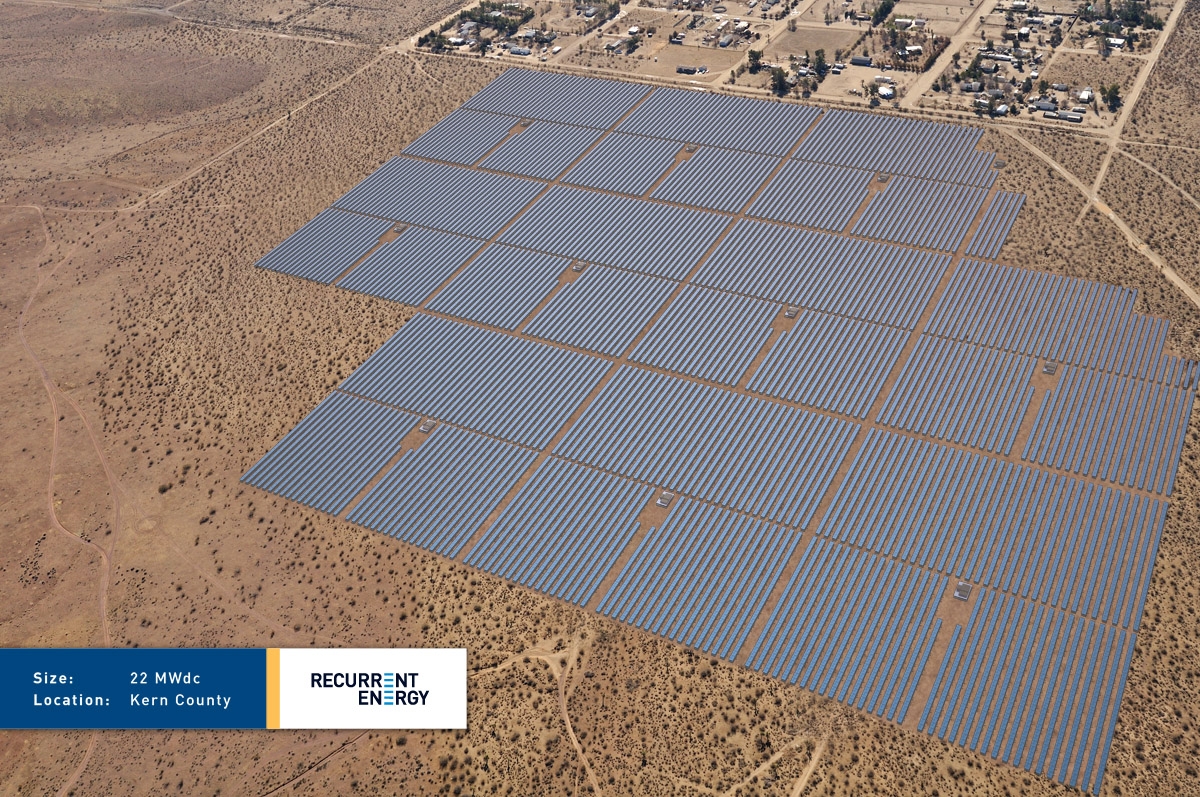This morning, Recurrent Energy will announce that it has signed a power purchase agreement with Southern California Edison (SCE) for 50MW of solar. This might not seem like a big deal — California utilities seem to sign solar agreements every week these days — but there’s something special about this one.
Recurrent’s power will not come from a single large-scale solar power plant out in the desert but from three small-scale solar PV projects, one 6MW and two 22MW installations in Kern and San Bernadino counties, which it will own and operate. In other words, Recurrent is selling distributed solar power, but in quantities that matter, at a price that’s competitive. That bodes well for the future of distributed energy (about which, regular readers know, I am very geeked).
 Recurrent Energy
Recurrent Energy
Because it is building small- to mid-size solar arrays, Recurrent has a number of advantages over power companies building large central plants:
- It’s easier to find land, because solar panels are modular (they can be scaled to any size/shape of land parcel) and they are quiet and non-polluting (they can be located next to homes and offices).
- For the same reasons, distributed solar doesn’t require environmentally sensitive land; it can be placed on already developed land or industrial rooftops. That makes for a much easier and faster permitting process.
- Distributed solar doesn’t require new transmission, since it can be located next to existing lines. There’s no waiting for transmission permits or construction. Interconnection to the grid can happen almost immediately, and some of the value of avoided transmission can be built into the power price.
- Because it avoids many permitting and interconnection hassles, Recurrent can build projects faster, in the range of two to three years. (The SCE projects will go online in 2013.)
- Because it has many smaller investments rather than one big one, Recurrent is more able to adapt to delays or setbacks at individual projects.
- Because it has a steady stream of new projects rather than one every 5-10 years, it is better positioned to take advantage of iterations in technology. (And solar panel prices are descending quickly.)
This is not to unduly valorize Recurrent but simply to point out that the benefits it enjoys by focusing on distributed energy are the very benefits society accrues from distributed energy: more flexibility, resilience, and iterative speed. Most importantly, Recurrent is proof of concept that distributed projects can be aggregated into large-scale power purchase agreements. Distributed energy is now a viable market option.
I talked with Recurrent CEO Arno Harris — an energy geek himself, with his own blog — and he says the company has around 1 GW of projects in the pipeline. Let’s see how fast they come online relative to, say, their nuclear and “clean coal” competitors, or even their large-scale solar thermal competitors.
In fact, I’ll make a bet: the U.S. will see its next GW of distributed power before it sees its next GW of central-plant power. Any takers?


